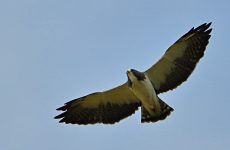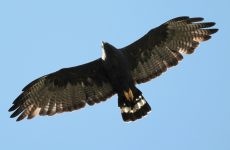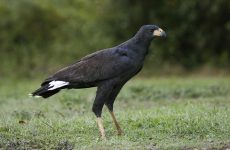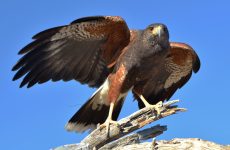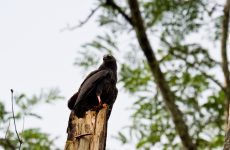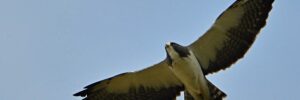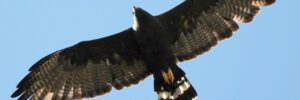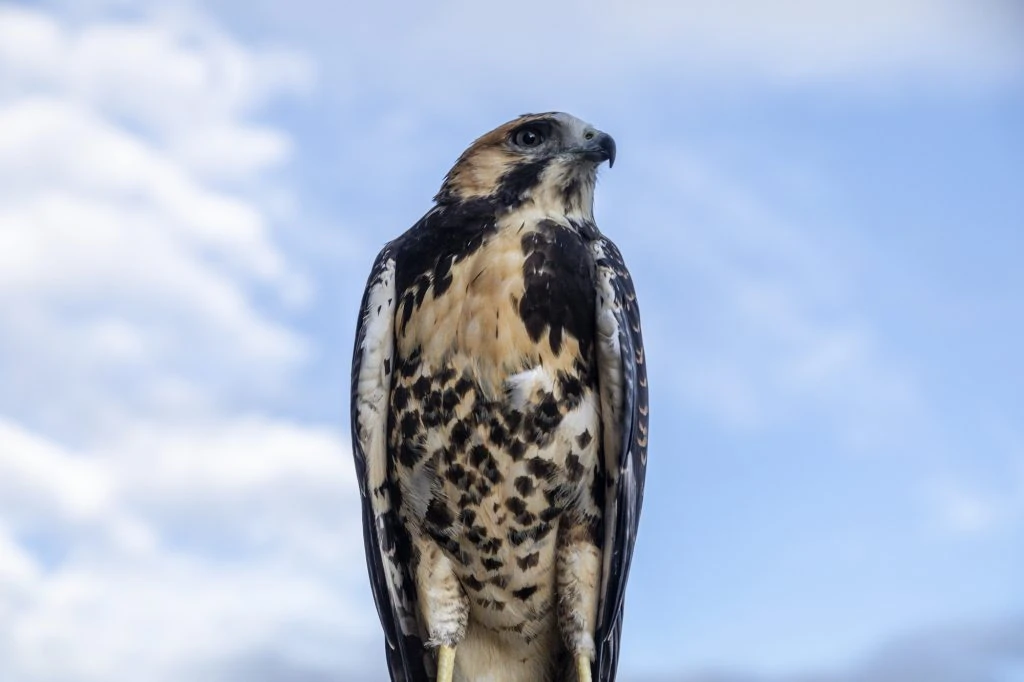
White-tailed Hawks are aptly named because of their white tails with a dark band at the tips that are most visible while in flight.
White-tailed Hawks have two morphs.
Adult light morphs have gray heads and backs, chestnut patches on the shoulders, and a flash of white underneath. Their long and dark wings are white underneath and extend beyond the tail. They have faint brownish barring on their flanks.
Adult dark morphs are dark gray everywhere except for their white tails and underwing coverts.
Immatures are darker than adults and are speckled across the chest and belly. They have no chestnut patches on the shoulders. Females are larger than males.
- Geranoaetus albicaudatus
- Male
- Length: 18.1 – 20.5 in (46 – 52 cm)
- Weight: 31.0 – 43.6 oz (880 – 1235 g)
- Wingspan: 50.4 – 51.6 in (128 – 131 cm)
- Female
- Length: 18.9 – 22.8 in (48 – 58 cm)
Range
White-tailed Hawks do not migrate and are more common in South America, with some birds reaching up as far as Texas.
Habitat And Diet
You can find White-tailed Hawks in grasslands, savannahs, prairies, pastures, and any open or semi-open areas with few trees as these are the spots best for hunting prey with very few obstacles to hinder their path.
Rodents, rabbits, lizards, and other birds make up their diet. They hunt from the air and from perches, diving and seizing them with their talons.
They are especially easy to spot after fires when they take advantage of the fleeing animals for a quick meal.
White-tailed Hawk Call:
Nests
Nests of White-tailed Hawks are often placed above the ground, around six to ten feet high, in trees or shrubs in open areas without much tall vegetation, and near a water source.
Both adults build their bulky nests out of dried branches, twigs, grasses, and aromatic plants. The female lays two to three eggs which take about a month to hatch.
Fun Fact:
The dark morph for White-tailed Hawks in North America (G. a. hypospodius) only appears in juveniles and immatures.

